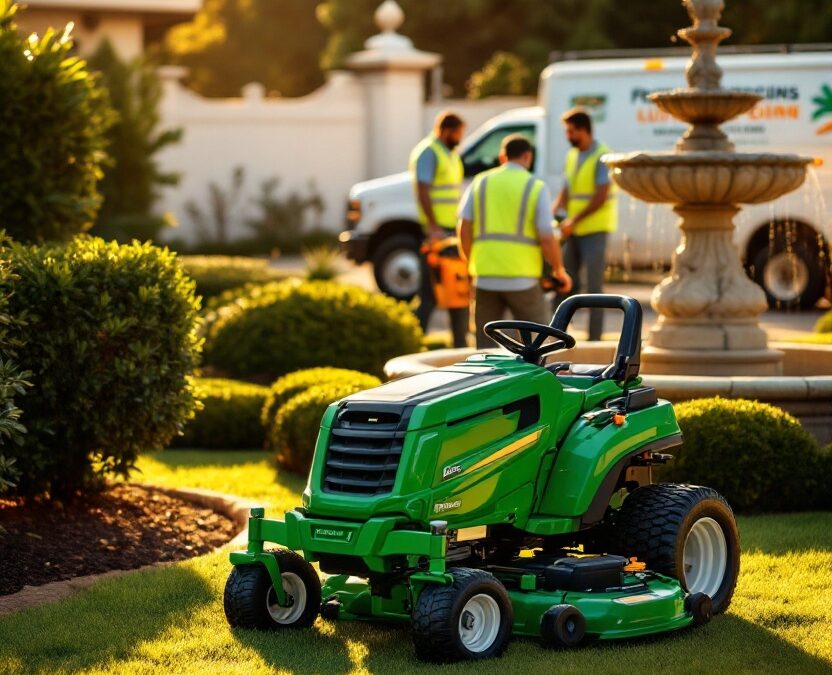You'll need three crucial insurance types to protect your lawn care business: general liability insurance ($1M per incident coverage), commercial auto insurance (required in 49 states), and workers' compensation (once you hire employees). General liability guards against client injuries and property damage, commercial auto covers your work vehicles and accidents, and workers' comp handles employee injuries like strains and lacerations. Understanding these core coverages will help you build thorough protection for your operation.
Key Takeaways
- General liability insurance protects against third-party injuries and property damage, with typical coverage of $1M per incident.
- Commercial auto insurance is mandatory in 49 states and covers vehicles used for transporting equipment and reaching clients.
- Workers' compensation becomes required once you hire employees, covering workplace injuries and related medical expenses.
- Monthly premiums average $31-$50 for general liability, $150-$204 for commercial auto, and $137-$169 per worker for compensation.
- These three insurance types form the essential foundation of risk management for lawn care businesses.
General Liability Insurance: Protecting Your Lawn Care Operations
When operating a lawn care business, general liability insurance serves as your primary line of defense against potentially devastating financial losses.
This crucial coverage protects you against third-party bodily injury and property damage claims, with typical coverage limits of $1M per incident and $2M aggregate annually.
You'll have protection for common scenarios like client injuries from falling branches or property damage from equipment accidents.
The claims process is straightforward, covering legal defense costs and settlements.
While premiums typically range from $31-$50 monthly, your actual costs will depend on your business size, services offered, and revenue.
Commercial Auto Coverage: Safeguarding Your Business Vehicles
As your lawn care business relies heavily on vehicles to transport equipment and reach clients, commercial auto coverage forms a vital component of your insurance portfolio.
This fundamental coverage protects you against accident liability and vehicle damage, with monthly premiums typically ranging from $150-$204 for landscaping companies.
You'll need to maintain state-mandated coverage limits, which are mandatory in 49 states.
The policy covers legal expenses from at-fault accidents, collision repairs, and medical costs for injured drivers.
When your employees use personal vehicles for work tasks, you'll want to supplement with HNOA coverage to bridge any gaps in protection.
Workers' Compensation: Essential Protection for Your Lawn Care Team
Your lawn care team faces physical demands and hazards daily, making workers' compensation insurance a cornerstone of your risk management strategy. You'll need coverage once you hire employees, with premiums ranging from $137-$169 monthly per worker. Effective claims management starts with understanding your policy compliance requirements.
| Risk Type | Common Injuries | Avg. Cost |
|---|---|---|
| Physical | Strains/Sprains | $12,000 |
| Equipment | Lacerations | $8,000 |
| Environmental | Heat/Chemical | $8,500 |
Don't overlook state-specific requirements and industry codes that affect your rates. Tree trimming operations (code 0042) cost more than basic mowing services (code 9102), reflecting different risk levels.
Conclusion
You'll need all three insurance types to fully protect your lawn care business from potential risks and liabilities. By securing general liability, commercial auto, and workers' compensation coverage, you're safeguarding your company's future against accidents, injuries, and property damage claims. Don't wait until an incident occurs to get proper coverage – take action now to guarantee your business stays protected while you focus on growing your customer base.
